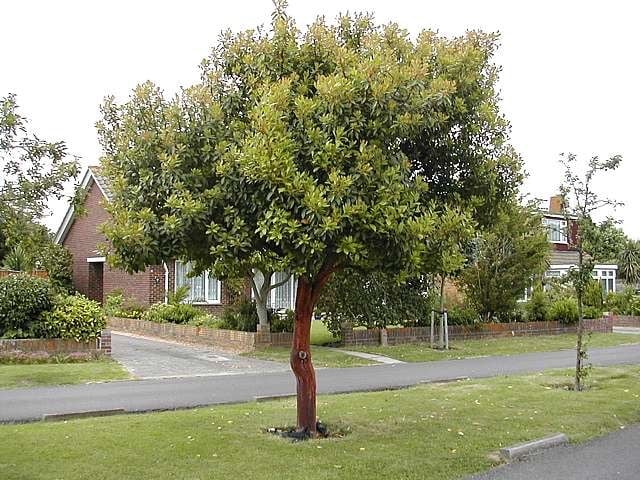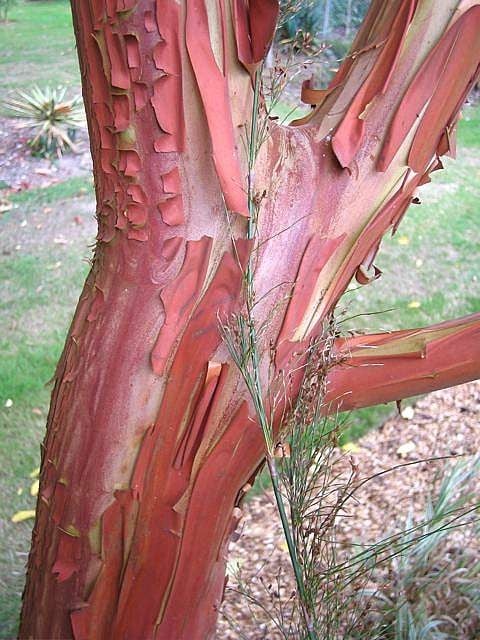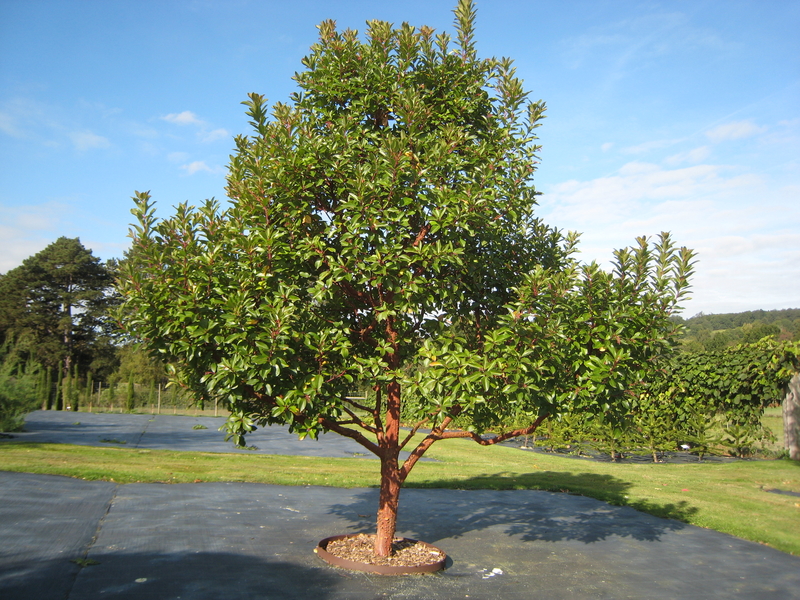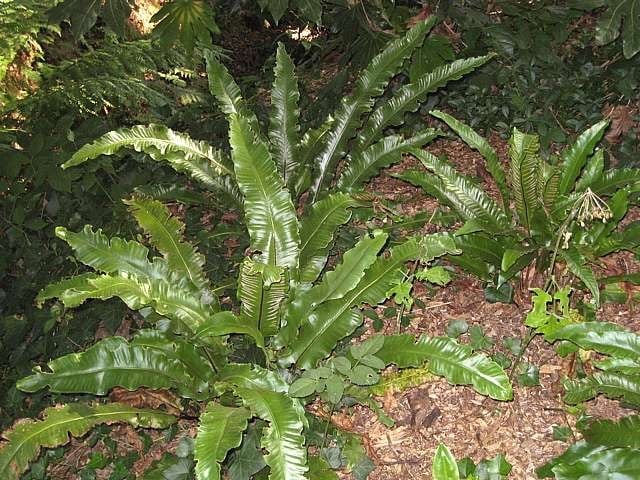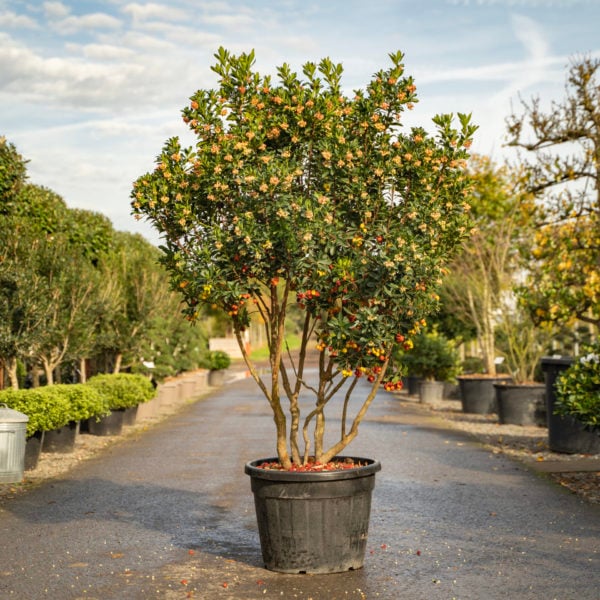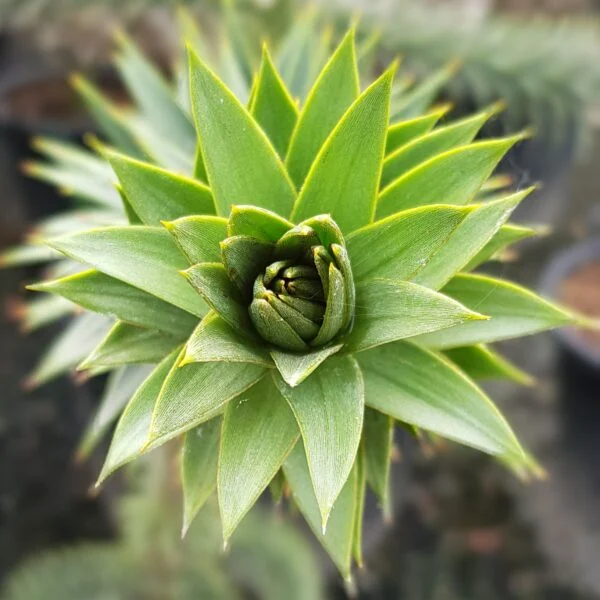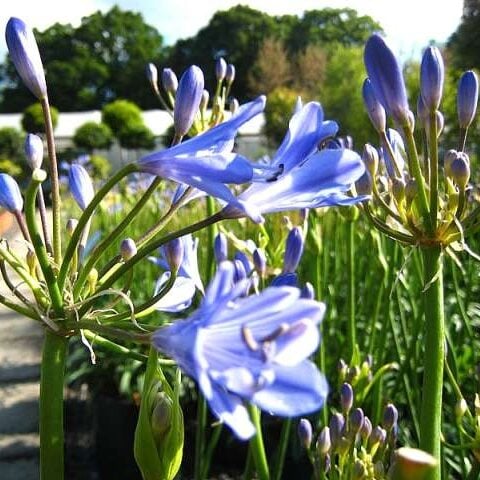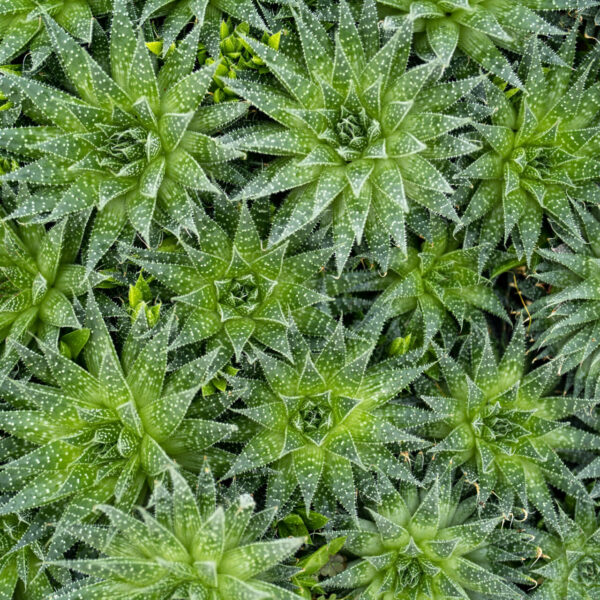Arbutus x andrachnoides (Red Barked Strawberry Tree)
Rare and desirable shapely little evergreen tree. Red stringy bark, masses of little white flowers, needs well drained soil. Quite fast growing to 25ft in 15 years. Please contact us for stock availability and sizes.

Hardiness level Amber
A much sort after little evergreen tree. It's a naturally occurring hybrid (cross) between two species of Arbutus (Strawberry Tree) found in Greece and Turkey - Arbutus unedo (also found throughout the Med and western Europe) and Arbutus andrachne (The Grecian Strawberry tree). The result is a faster growing tree (it's called hybrid vigour) than either parent with the hardiness of A. unedo and the wonderful red flaky bark of A. andrachne. Hybrids are infertile so produce no viable seed therefore propagation can be a problem. Masses of white bell-like flowers in summer and occasional fruit but no viable seed. Usually we'd take cuttings but they root with reluctance. Micropropagation is the answer and all the plants we produce are from our own lab.
There are some fine specimens at Bodnant garden in North Wales and one in the Savill Garden near Windsor and then there used to be a magnificent one right by the bridge in the middle of Arundel. It was said to have been planted by Sir Frederick Stern (famous for his Highdown garden now open to the public north of Worthing) around the turn of the century. This tree was pivotal in the genesis of Architectural Plants. I wanted one like it for my garden near Horsham and acquired a plant from a nursery (naming no names) in Cornwall. When I picked it up I was doubtful but was reassured it was the real thing. It wasn't. As soon as I realised, I determined to stop making furniture, start a nursery growing all the plants I liked (and couldn't get) and make damn sure that the plants we grew were what we said they were. I was quite cross. That was in 1987. Since then, I've mellowed. A bit. We took masses of cuttings from the Arundel tree and as we had to do this with various telescopic clipping devices from the bridge, used to get quite a crowd of locals looking on and asking what it was. They'd always wondered. I seem to remember that as a result, Arun District Council (on whose land it grew), labelled it. We got a few to root and then micropropagated. Around 1999, the poor old thing blew over in a storm and ended up in the river stuck under the bridge. The ignominy. The council asked if we could replace it. Of course. We gave them our biggest and best and we were on the telly and the Duchess (of Norfolk - they live in the local castle) held a ceremony and we were given a piece of paper - the Freedom of Arundel, or something. Two years later the bloody thing died. More embarrassment. We replaced that one and I'm pleased to relate - it's still there. Like many trees, all the Arbutuses get little dead twigs and branches all over them. A pleasant occupation is using clippers to remove them. The effect on the tree is a dramatic aesthetic improvement.
Height after 30 years about 20 to 25 ft by which time, growth rate is slowing down considerably. Like many plants from parts of the world with a Mediterranean climate (long dry summers, short wet winters), this tree needs very good drainage. We find a good guide is remembering that it likes similar ground conditions to that of Rosemary and Lavender.
All the Strawberry Trees are prone to getting black spots on their leaves by the end of winter. It doesn't appear to be a fungal problem but is aggravated by the plant being less than content - usually either because it's in a pot or its roots are dying back due to over wet conditions. It's also a part of the natural disintegration and fall of old leaves before the new ones appear in the spring. There seems to be no treatment other than removing unsightly leaves by hand or be patient - the spring always brings nice fresh new perfect leaves.
N.B. When clipping several plants with the same tool, have a bucket containing a 5% bleach solution and swish your blades around for 30 seconds between plants to sterilise them. This will help avoid the chance of cross contamination of disease.
As with all woody plants, plant high, exposing as much of the taper at the base of the trunk as possible. Allowing soil to accumulate round the base of a tree can be fatal. Keep very well watered when first planted.
Additional Information |
|
|---|---|
| Soil Type | |
| Light | |
| Plant Type | Edible, Evergreen, Flowers, Grown by Us, Screening Plants, Shrubs, Trees |
| Continent of Origin | |
| Specialist Plants | |
| Features | |
| Tree Size | |
| Situation | Coastal, Exposed (To wind and sun), Mild City Gardens, Sheltered Garden |
| Flower Colour | |
| Hardiness | |




